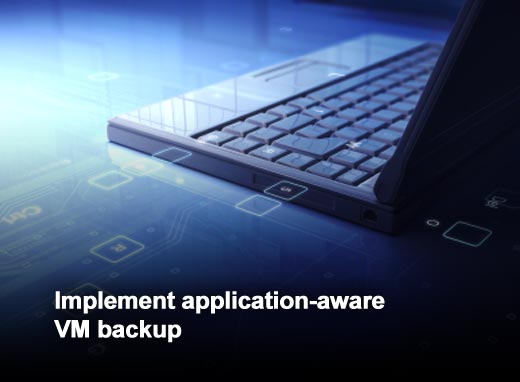According to a recent Quest Software survey, organizations now rank restoring critical applications alongside recovering lost data as their top data protection concern. Problematically, ensuring the recoverability of critical applications creates a host of challenges for IT departments. Even worse, the challenges of application recovery cannot be addressed with the same techniques traditionally used to ensure the recoverability of lost data. Here are the top five challenges associated with modern application recovery and top five tips to solve them.
Click through for the top five challenges associated with modern application recovery and top five best practices to solve them, as identified by Quest Software.
Applications have varying degrees of value to the business, and must be protected accordingly. For example, the application powering the finance department’s transactional database needs to be held to a stricter SLA than an application less critical to business operations. This means organizations need to be strategic about setting application recovery objectives. One-size-fits-all recovery will not suffice.
If all applications aren’t the same, then the recovery strategy assigned to each of those assets shouldn’t be the same, either. Organizations should align the backup and recovery strategy for a given application with the criticality of that application to the business. The more critical the application, the more aggressive the recovery objective should be.
With virtualization the norm in most of today’s data centers, a growing number of organizations are virtualizing their mission-critical applications. Problematically, many traditional backup solutions only enable image-level backups; so, to recover just a single lost item, admins must restore the entire VM on which an application is running.
Organizations should make it a priority to use a VM backup solution that’s truly application-aware and contains a searchable catalog. This will provide the capability to search for specific items, and conduct granular restores. Being able to recover a single Microsoft Exchange mailbox, or even a single attachment, without having to restore the entire VM is critical to meeting aggressive application recovery objectives.
Restoring critical applications is often a two-step, two-person process that can be both arduous and time consuming. In most cases, the backup admin is only capable of restoring the image of the data. The application administrator then needs to reconfigure the underlying application.
By providing application administrators with direct visibility into the recoverability of the specific IT services they are responsible for managing, and enabling them to leverage specialized data protection tools to perform granular backup and recovery tasks, IT can bypass the time-consuming, two-step recovery process that makes restoring applications so challenging with traditional backup strategies.
The reality of today’s mixed physical, virtual, and cloud environments is that application assets no longer necessarily reside in the same place in the underlying IT infrastructure. Some application assets may reside on a physical server, some may reside on a virtual machine, and some may even reside off-premise. Truly restoring an application in this complex environment requires a search of multiple backups, in multiple locations, to collect all the necessary components.
Choose a data protection solution that provides the capability to organize, schedule, view, and manage backups based on services, rather than servers. This will enable admins to group all relevant assets associated with a given application – including servers, virtual machines, and databases – into an application group against which they can directly set and manage recovery SLAs.
Many organizations have implemented high-availability, replication-centric solutions designed to protect mission-critical data and applications. However, in the event of a corruption, not only is data replicated, but so too is the command or error that caused the corruption in the first place. Without the ability to restore an application to a point in time before a corruption occurred, organizations still are exposed to risk.
With true CDP solutions, IT can restore critical applications back to any point in time. This provides protection against corruptions that might otherwise wipe out an entire application.













